Remember this bundle of leaves and my excitement about finally meeting E Nicholii, fully grown? The straight, narrow leaves below were supposed to be E Nicholii.
Well. E Nicholii is a well- and long-recognised dye eucalypt, described by Jean Carman and the Victorian Handspinners and Weavers Guild in their classic books, and prized by dyers I have spoken to who were using it in the 1970s and 1980s to obtain reds and oranges. So I was rather surprised to find this result from the best of several attempts:
I did get a roughly orange smudge on some of my fabrics from the ‘E Nicholii’. In the same pot, cooked for the same length of time and on fabric mordanted in the same batch, E Cinerea produced vibrant colour:
In the past, using trees I was entirely confident were E Nicholii (albeit small specimens) I have got something more like this:
These are blocks from a quilt I have been working on…
My own E Nicholii is a tiny specimen, surrounded by a personalised fence to prevent certain marauders with a tendency to dig up anything promising with no thought for the future.
The marauders came past to check what was happening as I took a photo of the tree.
How to explain this eco-printing result? I didn’t identify these trees myself but relied on someone else who was clearly knowledgeable, which is not to say any of us are above error. If I had identified them myself, I would say without hesitation that the dye pot is more reliable than my identification skills. But there are so many variables: these trees were mature while I have tried only young trees–all I have been able to find and identify with confidence. They were in relative shade and growing in a relatively cool spot… I just don’t know!

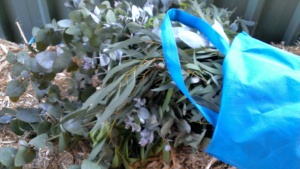
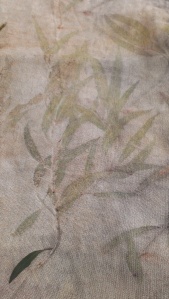
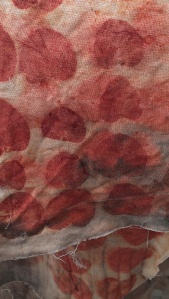
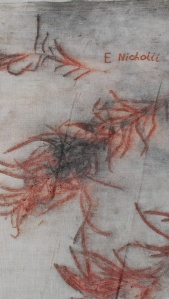
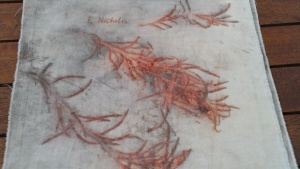
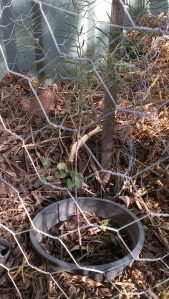

well i’ve found colour yield from eucalyptus species to be strongly influenced by soil and water conditions ie varieties which would give me red at home give me bright green when grown and processed in Scotland. the whirled is full of mysteries
LikeLike
It certainly is… which is mostly a good thing! Wish I could even know for certain whether this is an E Nicholli or not. Maybe that particular mystery can be resolved in the future…
LikeLike
There seem to be no ‘sure things’ when it comes to eco printing…. but isn’t that one of the exciting things that keep us experimenting?
LikeLike
It certainly is! I am a bit gripped by working forward from knowledge about what a tree is to the outcomes I can get from it in the dye pot but also working in the other direction, from dye pot outcomes to questions about teh tree I am working on.
LikeLike
And here I was wondering if kangaroos are a garden pest down there like deer are up here…ha!
: )
LikeLike
I was gobsmacked when I visited Berkeley years back to see deer wandering through backyards (mind you… I was also fascinated by hummingbords and bumblebees–my threshold for wonder might be lower than some people’s). I have never seen a kangaroo in inner suburbia. I do sometimes see a koala at my workplace, but it contains a lake and a lot of trees!
LikeLike
I put up hummingbird feeders and bee habitats, so I think you’re not alone. When I was in Palo Alto once I was fascinated by the gangs of hummingbirds…very aggressive and territorial…amazing for such tiny things. Here they are more solitary.
LikeLike
I am so delighted to be in the company of other hummingbird admirers and bumblebee appreciators! I was amazed it was possible for other Australians to find these things so little exciting (we don’t have either hummingbirds or bumblebees here), and for USers to find them so commonplace–as if a hummingbird could be any less awesome because you’ve seen one before!
LikeLike
Eco printing can sure keep you guessing. I have a similar situation with arbutus bark; last year it was giving me dark coppers and this year it is light beiges….same tree.
LikeLike
Wouldn’t it be sad to be bored?? There are just so many variables…
LikeLike